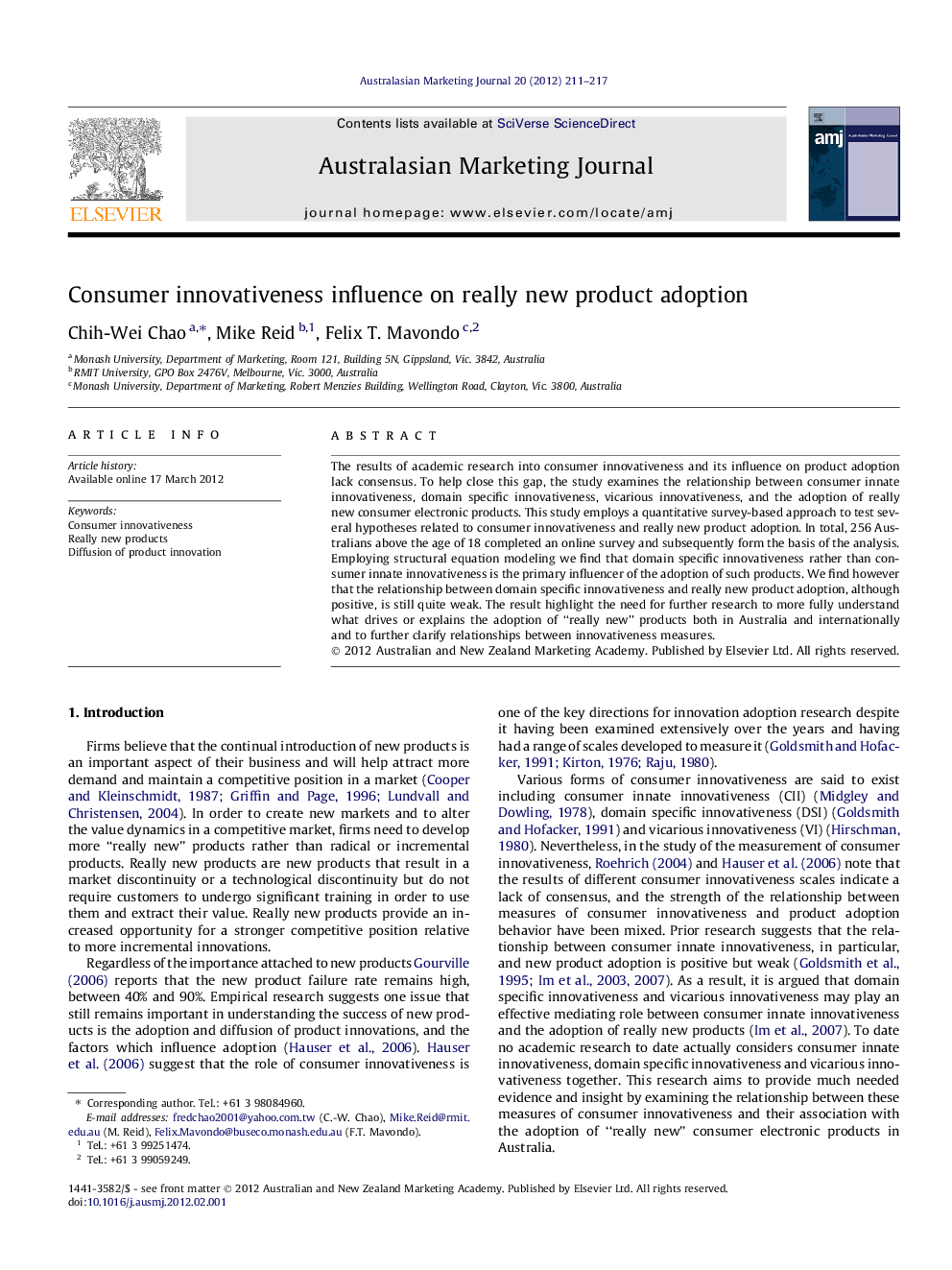| Article ID | Journal | Published Year | Pages | File Type |
|---|---|---|---|---|
| 1027057 | Australasian Marketing Journal (AMJ) | 2012 | 7 Pages |
Abstract
The results of academic research into consumer innovativeness and its influence on product adoption lack consensus. To help close this gap, the study examines the relationship between consumer innate innovativeness, domain specific innovativeness, vicarious innovativeness, and the adoption of really new consumer electronic products. This study employs a quantitative survey-based approach to test several hypotheses related to consumer innovativeness and really new product adoption. In total, 256 Australians above the age of 18 completed an online survey and subsequently form the basis of the analysis. Employing structural equation modeling we find that domain specific innovativeness rather than consumer innate innovativeness is the primary influencer of the adoption of such products. We find however that the relationship between domain specific innovativeness and really new product adoption, although positive, is still quite weak. The result highlight the need for further research to more fully understand what drives or explains the adoption of “really new” products both in Australia and internationally and to further clarify relationships between innovativeness measures.
Keywords
Related Topics
Social Sciences and Humanities
Business, Management and Accounting
Marketing
Authors
Chih-Wei Chao, Mike Reid, Felix T. Mavondo,
